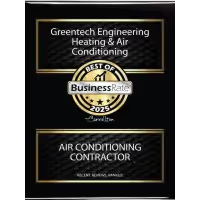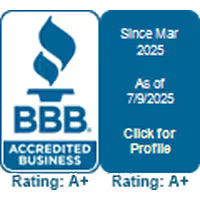.avif)
Expert Insights: Signs Your Outdoor AC Unit Needs Repair in Little Elm
Is your Little Elm home's comfort on the fritz? Your outdoor AC unit works hard to keep you cool, but over time, wear and tear can lead to a decline in performance. Recognizing the early warning signs isn't just about avoiding a mid-summer meltdown; it's about being proactive, saving money on future repairs, and ensuring your system operates efficiently. At Greentech Engineering, we believe in transparent, honest expertise—not pushy sales. Let us help you understand what to look for, so you can make informed decisions about your AC's health.
Why Early Detection Matters for Your Little Elm AC
Ignoring subtle cues from your outdoor AC unit can lead to more severe damage, costly emergency repairs, and skyrocketing energy bills. Identifying problems early allows for timely, often simpler, interventions. It extends the lifespan of your unit, maintains optimal cooling, and provides peace of mind. For Little Elm homeowners, a reliable AC system isn't a luxury; it's a necessity.
Key Indicators Your Outdoor AC Unit Needs Attention
Your AC unit communicates its needs in various ways. Pay close attention to these common symptoms:
Performance & Cooling Issues
These are often the most noticeable signs that something is amiss with your outdoor unit.
- Weak Airflow: If air barely trickles from your vents, or if some rooms are significantly warmer than others, your outdoor unit might be struggling to push refrigerant or maintain pressure. This could indicate a failing compressor, clogged components, or issues with the fan.
- Inconsistent Cooling: Is your home hot one day and adequately cool the next, or are temperatures fluctuating significantly? This "on-again, off-again" performance suggests underlying issues with your unit's ability to maintain a consistent cycle.
- AC Runs Constantly or Cycles Too Often: An AC unit that runs non-stop without reaching the set temperature, or one that cycles on and off rapidly, is working overtime and losing efficiency. This can point to thermostat problems, a refrigerant leak, or an undersized unit.
- High Humidity Indoors: Beyond cooling, your AC system is also designed to dehumidify. If your home feels clammy or muggy even with the AC on, the outdoor unit might not be properly removing moisture from the air, often a sign of reduced cooling capacity.
Unusual Noises & Odors
Your AC unit should operate with a relatively consistent, low hum. Any deviation from this is a red flag.
- Loud Banging, Clanking, or Grinding Sounds: These severe noises usually signal loose or broken internal components within the compressor or fan motor. Ignoring them can lead to catastrophic system failure.
- Squealing or Squeaking: Often indicative of a failing motor bearing or a worn belt. While less severe than banging, it warrants immediate attention to prevent further damage.
- Hissing Sounds: A distinct hissing sound often points to a refrigerant leak. This not only impairs cooling but can also be harmful to the environment.
- Burning Smell: A burning odor suggests electrical issues, an overheated motor, or burning wires. This is a serious fire hazard and requires immediate professional inspection.
- Musty or Moldy Odors: If your outdoor unit is contributing to a musty smell indoors, it could be a sign of mold or mildew growth within the system, potentially due to drainage issues or excessive moisture.
Visible Signs & Financial Impact
Sometimes, the problem isn't just felt or heard, but seen, or reflected in your wallet.
- Visible Ice Formation on Coils or Lines: Ice buildup on the outdoor unit's refrigerant lines or evaporator coils is a clear sign of a problem, usually insufficient airflow, low refrigerant levels, or a faulty fan. This indicates that your unit is literally freezing up.
- Puddles or Leaks Around the Unit: While some condensation is normal, significant puddles or continuous dripping around the outdoor unit could signal a blocked condensate drain, a refrigerant leak, or other drainage issues.
- Skyrocketing Energy Bills: If your electricity bills are suddenly much higher than usual without a corresponding increase in usage, your AC unit is likely working inefficiently, consuming more power to achieve less cooling. This is often a key sign that it's time for repair or even replacement.
- Frequent Repairs: If you're constantly calling for AC repairs, especially for the same issues, it might be more cost-effective in the long run to consider a new, more reliable system.
Your Trusted Little Elm AC Experts Are Here to Help
Don't let these signs turn into a full-blown emergency. If you notice any of these indicators, it's time to call in the professionals. At Greentech Engineering, we offer straightforward, honest diagnostics for your outdoor AC unit in Little Elm. Our expert technicians will thoroughly assess your system, explain the issues clearly, and provide transparent recommendations—whether it's a simple repair, routine maintenance, or if your system is nearing its end-of-life and replacement options should be considered.
We pride ourselves on being experts in air conditioning, not salespeople. We're committed to providing hassle-free, reliable HVAC solutions to our neighbors in Little Elm and the greater DFW area.
Ready to get your AC back in top shape?
- Schedule an AC Repair or Diagnostic Service
- Learn More About Our AC Maintenance Plans
- Explore Transparent AC Replacement Options
Contact Greentech Engineering today for expert, honest advice and service for your outdoor AC unit in Little Elm.

Flexible Financing Options
Explore our range of flexible financing options designed to suit your needs and budget.













